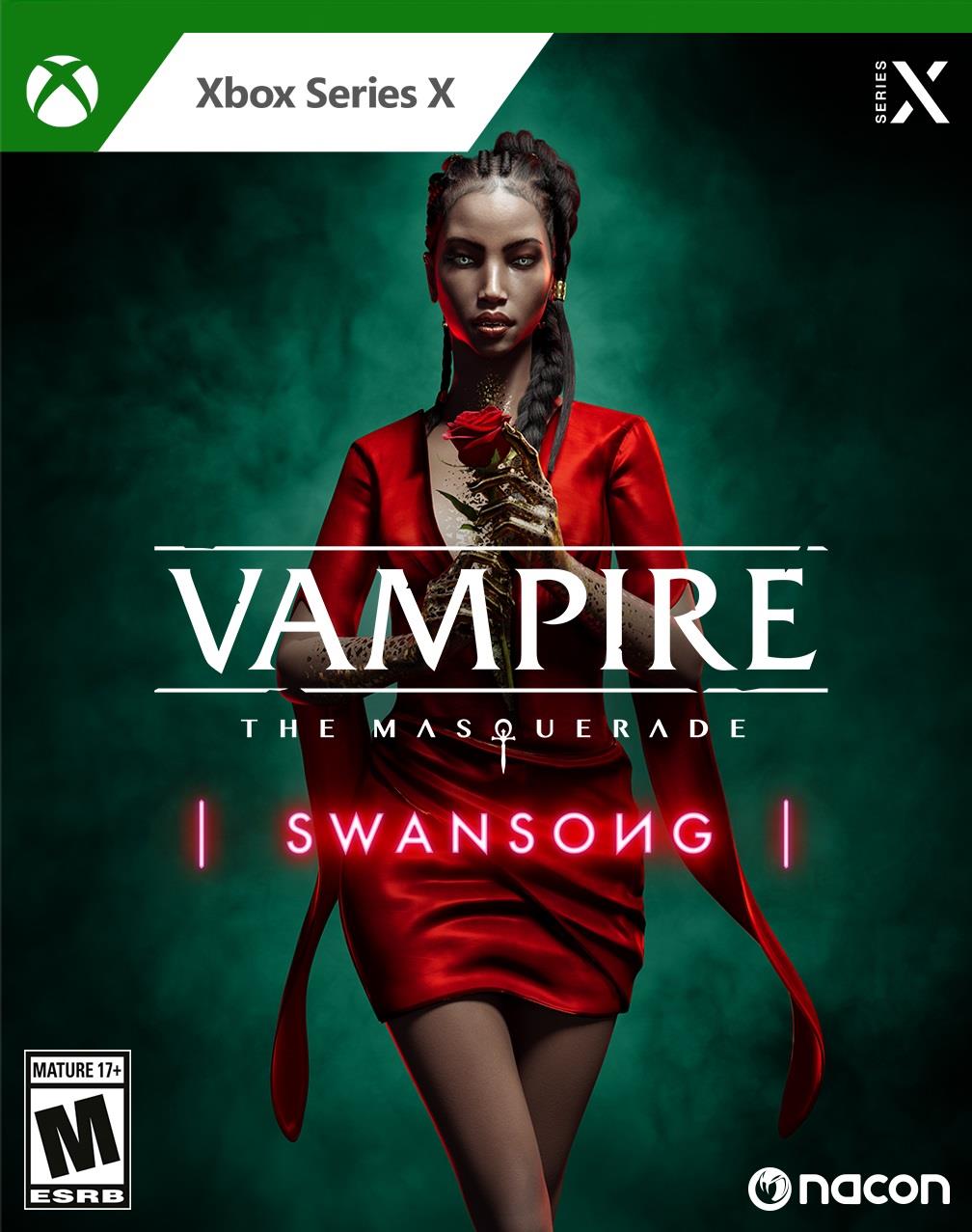Vampire: The Masquerade – Swansong
Developer: Big Bad Wolf Studios
Publisher: Nacon
Platforms: PC, PlayStation 4, PlayStation 5, Xbox One, Xbox Series X (Reviewed), Switch
Release Date: Available Now
Price: $49.99 USD – Available Here $89.95 AUD – Available Here
Overview
When it comes to the Vampire: The Masquerade series there has always been a lot to love. Whether it happens to be the tabletop RPG it originated from or cult classic Bloodlines, being able to sink into the lore filled world of vampires blending in with society while adhering to a strict code has left fans eager for more. As such it came as something of a surprise that the franchise has only recently seen a resurgence in video games, in the form of smaller games and a constantly delayed sequel to a certain fan favorite, with the narrative based Swansong being the latest to sink its teeth into a fanbase eager for more. Vampire: The Masquerade – Swansong‘s impressive world and solid storyline may fit in perfectly with the series’ lore but technical hiccups and investigative limitations keep it from truly reaching its potential.
Story
Set in a modern day Boston, Vampire: The Masquerade – Swansong begins with the local Camarilla Prince triggering a “Code Red” that not only summons the head of most vampire factions in the area to the Prince but also puts everything on immediate lockdown. The reason for the Code Red is that a party meant to celebrate the unification of a number of vampire organizations has been attacked, resulting in mass casualties. Not only is the reason for the attack unknown but the perpetrators could be any number of factions, let alone the fact that it has potentially opened up the world of vampires to the prying eyes of humanity.
With the Masquerade at risk throughout all of Boston and numerous forces angry that they’ve lost loved ones, the Prince of Boston, Hazel Iversen, summons three specific vampires to try and find out everything that they can. This includes the oldest of the three vampires, the nearly three hundred year old Ventrue vampire named Galeb, the near-hundred year old Emem from the clan Toreador, and the youngest of the three, Leysha whose clan Malkavian leaves her with unstable but the most vital of powers. It is through the eyes of these three that players must try and find out the truth or behind the attack as well as the motivations of the party responsible for it, even if it means “cleaning” everything up as a result.
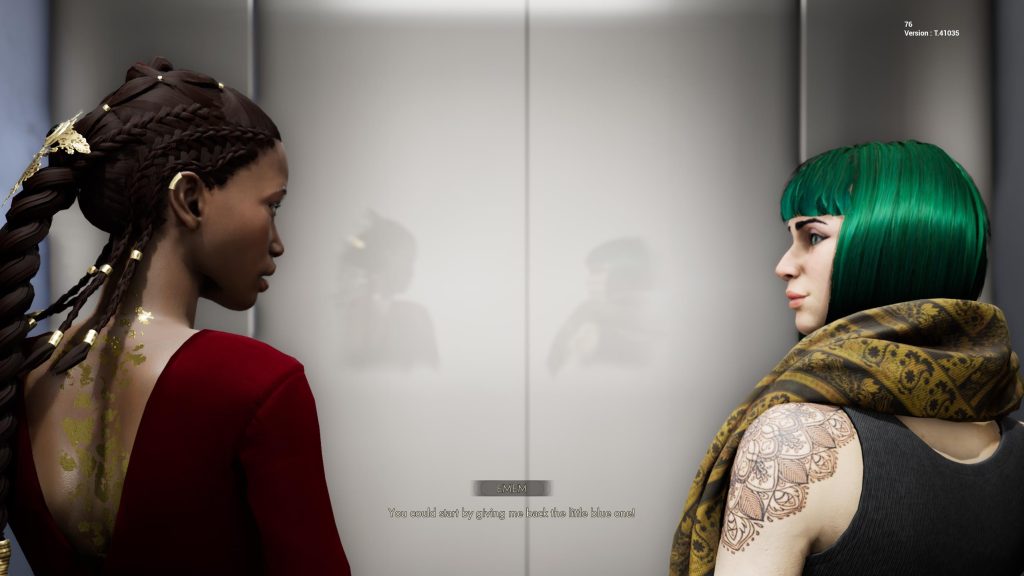
For those unfamiliar with Vampire: The Masquerade, jumping into Swansong may seem a bit daunting at first as the game does little to actually explain most elements of the game’s lore other than providing a few initial explanations of what the Masquerade is. What it does have to offer instead is an incredibly in-depth glossary that players can almost always access that contains not only terms from the franchise’s lore but also details about the various types of vampires and their quirks, the factions and powers throughout the world, and often even extensive details surrounding player characters and main characters that players will be interacting with, including their history. Although this may seem a bit overwhelming, learning the various terms and elements of the world are essential and something that players should brush up on as soon as possible.
Vampire: The Masquerade – Swansong starts off fairly strong by laying out such a drastic problem that players will need to uncover the truth behind and steeping the world in so much lore that it is incredibly easy to get hooked into allowing for a compelling narrative that is filled with various twists and secrets that players will need to try and uncover, but trying to do so means having to deal with some stiff villains as well as a lackluster investigation system focused around each character’s capabilities and trained stats and, quite frequently, bugs.
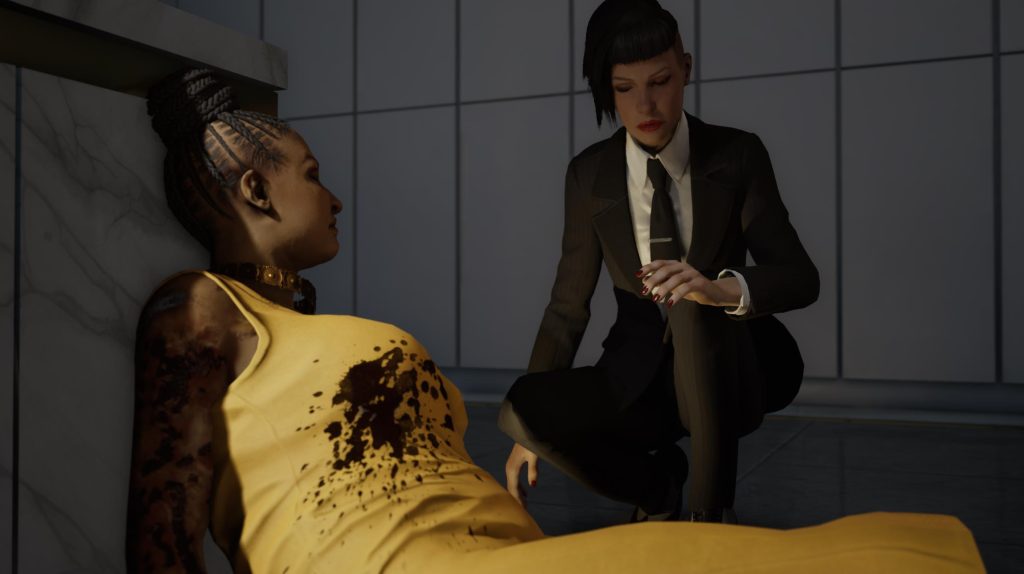
One of the key elements to Swansong’s story is how each of the three main characters plays as well as their backstory and developments but unfortunately, while they are written quite strongly they don’t really develop in any unique way outside of one. Galeb is a fairly stereotypical vampire and while Emem can reveal quite a few things about her past, does little to actually grow even if players try their best to aim her in that direction, especially since most character developments begin to phase out near the second half of the game. It is only Leysha that truly shines in this regard as being one of the most interesting characters to both play and learn more about throughout the game.
It is also worth noting that while Swansong does encourage players to play through the game more than once, the number of times that various interactions or revelations can simply be locked away due to a character not having enough “Rhetoric,” Knowledge, Technology or something similar can be quite frustrating even if there is usually more than one way to solve various encounters. In fact, while it is very intriguing and enjoyable to potentially sway a conversation in your favor by using a vampire’s specific “Discipline,” the actual opportunities to do so are few and far between. That being said, finding an entire route of storyline being either completely locked out or inaccessible simply because players may not have had enough points in a certain skill is far from enjoyable, even with the ability to skip text finally being unlocked after completing the game.
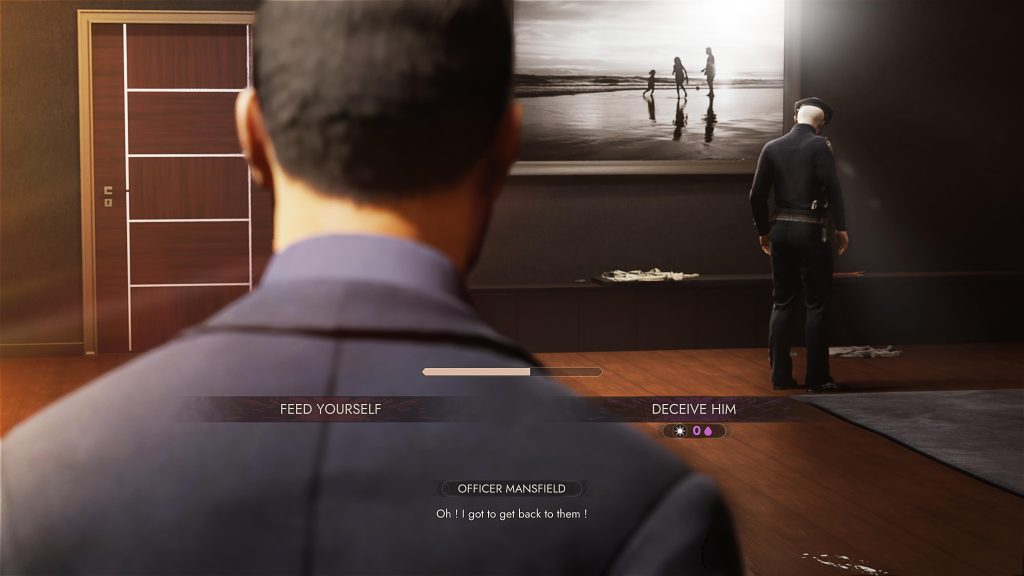
While these moments can cause frustration, there is a solid investigative storyline to be had here and with multiple endings for each of the three characters that will vary depending on player choice, including many events leading into said endings can play out, Swansong’s issues only put a damper on what is often a very interesting narrative with plenty of replayability.
Gameplay
For the most part, Vampire: The Masquerade – Swansong is something of a puzzle/mystery game where players must try and find as many clues as possible while investigating various small maps that are separated into scenes. While not everything players locate is helpful, some things will be and having the most options available to help potentially sway a conversation in your favor, bypass a lock with a located key, or even uncover a secret code to unlock a password, can be vital to try and be successful in a scene. They will also have to solve a variety of puzzles that range from simply taking context clues from the environment, to far more complex and frankly a few unintuitive ones. In fact, at the end of every scene players will be told of other potential options that could have been available to them, their successes, failures, and even a few key things that they may have missed, helping to express just how much the game values replayability.
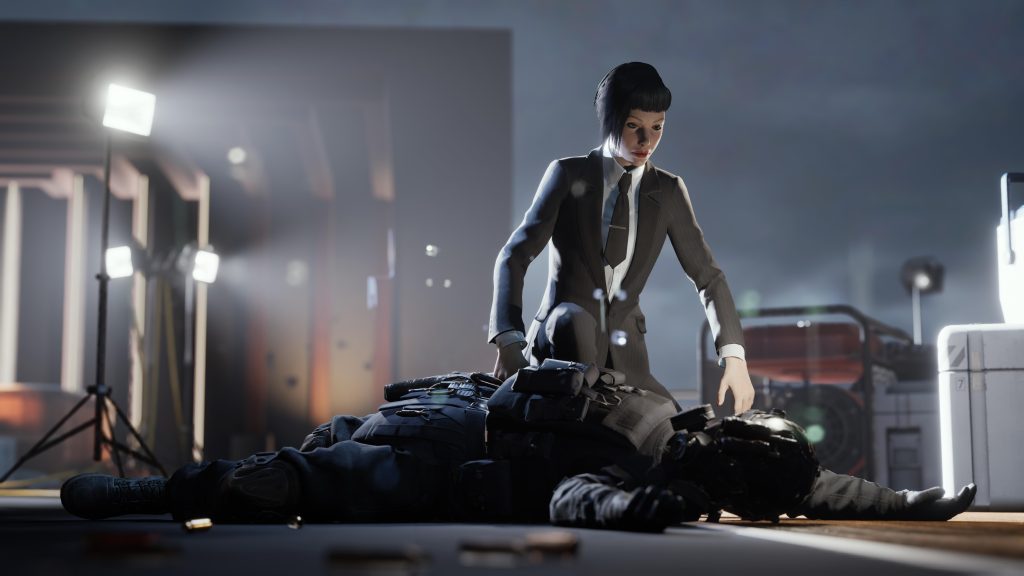
Depending on which vampire players are controlling, they will have a variety of different abilities available to them. Galeb is a dominating presence that is also capable of tracking down other undead, Emem can teleport around predetermined locations to reach potentially vital areas that otherwise would be unreachable, and Leysha , being a Malkavian, has the most unique powers as she not only suffers from visions that can potentially expose the Masquerade and can spring up from time to time but also has the most interesting elements to take advantage of. Leysha can both become completely invisible to nearly anyone, even other vampires, as well as change her outfit to match another’s, making many of her chapters feel like proper infiltrations of an area akin to a certain bald assassin.
Every scene players will have two different resources that they will need to manage. One of which is willpower that is expended either through interacting with certain objects in the environment or unlocking things as well as used during conversations with characters. When conversing with characters there will be times that certain dialogue selections will require specific skills to be used such as Intimidation and, should the player have at least one point in said skill, they can use willpower to boost their possible success rate of winning a discussion. This can lead to unveiling more information or potentially making it through an important confrontation that we will discuss more later. Willpower is limited and while it is possible to restore it using items, players will always want to be careful of running out and being left at the whims of the game. Players can find items for every character that can be used to regain small amounts of willpower, as well as hunger, that carry through the game.

The other element is one that will be true for every good vampire game, hunger. No matter what clan they may belong to, every vampire needs to drink blood to survive and using their powers or encountering certain situations only increases the thirst for blood. As such, players will need to make sure to keep their use of abilities in check or properly plan out how to safely feed in various scenes and not risk raising suspicion as it is entirely possible to become a dangerous threat to the Masquerade as a whole if players are a bit too bloodthirsty. Feeding on humans requires finding a safe area, leading one to such a location, and then taking part in a quick mini-game to successfully drink without killing them. A second feeding can happen in the same location but doing so will automatically kill a weakened human. It is also possible to feed on rats from time to time, though doing so is also frowned upon, though far less than an actual corpse.
Maintaining these resources is handled well-enough, especially since often it feels like players are far too limited in what they can actually do in scenes. Conversations with characters often limit when and what vampiric powers a player can use while using dialogue options is generally the better way to go about things, even when things aren’t as interesting as a result. This is especially true thanks to the restrictive way character building is handled and the lack of any new game plus option. At the end of every scene, players are rewarded with XP based on what they managed to find. This XP can then be used to unlock various aforementioned skills and put points into disciplines but unfortunately this can also mean that players can allocate points in a way that makes their character nearly useless in a scene.
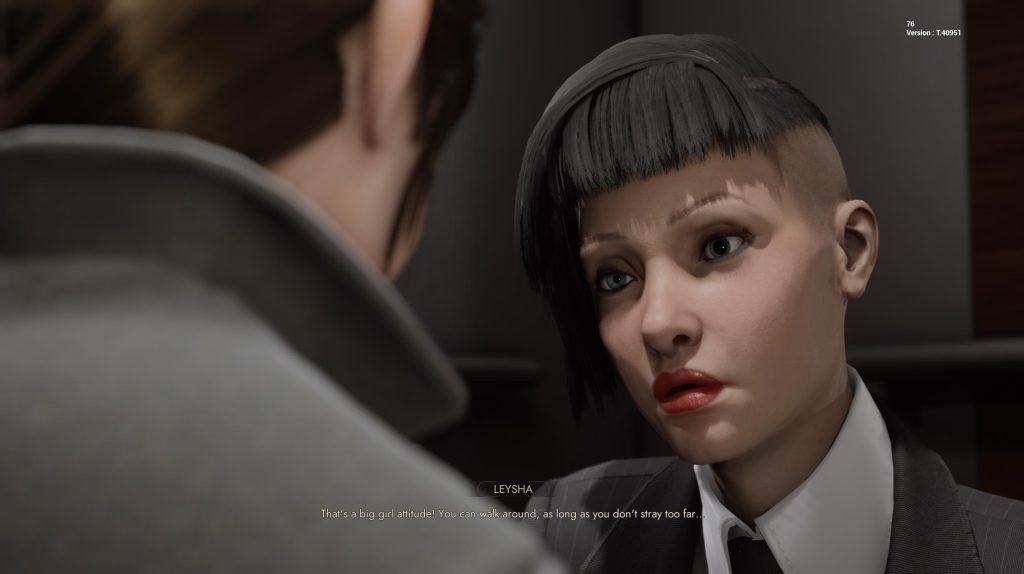
Perhaps the most important element of most scenes are confrontations with various characters. As far as Swansong can be concerned, these are treated in a fashion similar to boss fights where players must make it through a certain number of dialogue choices correctly and properly finish a discussion in their favor to try and succeed. Not every exchange needs to be a win as some misses are allowed in most confrontations but these play a vital role in trying to survive as well as unveil the most of what Swansong’s story has to offer. Despite how usual interactions can often play out, these tend to be the most exciting especially since they involve not only high stakes but also tend to make the most use out of what each character is capable of in terms of abilities and powers.
It is also worth noting that while players can choose to restart a scene to reallocate XP points to try and change things in their favor, these restarts can often take a massive step back and there is no way to save during the middle of a scene. As such it is also an incredible issue whenever a bug arrives that prevents progression. These bugs can arise either through NPCs glitching out and becoming uninteractible, puzzles locking into place and not being solvable, and more which can result in a massive restart and waste of time.
Visuals & Audio
With so much lore to delve into it is clear that the developers have tried to put a lot of emphasis into making sure character designs and outfits have been created to reflect their clans, including many unique looking designs and a few events that we can’t discuss due to their spoilerish nature and how various players may end up with different results. Many characters are nicely detailed and the various environments players explore are handled well but unfortunately even on the Xbox Series X the game suffers from massive amounts of texture pop-in that occurs frequently during discussions and even when exploring an area.
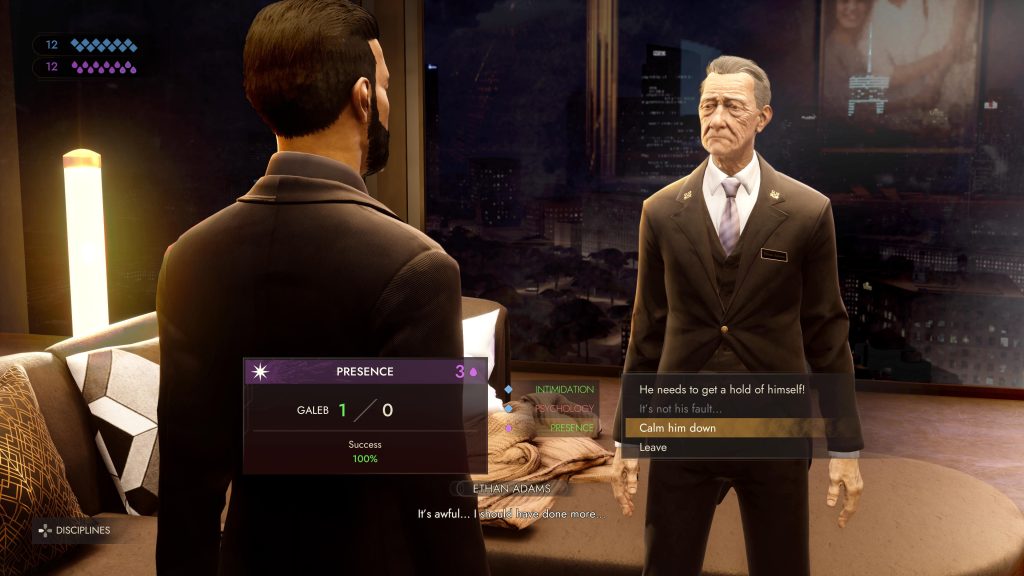
The voice work in Vampire: The Masquerade – Swansong is handled incredibly well with every piece of dialogue voiced by fitting characters and some great sound effects to match the theme of the game. As far as the soundtrack goes, the title features a fairly simple but fitting collection of tracks that work well enough but are far from memorable.
Overall
Vampire: The Masquerade – Swansong offers a unique take on investigation and offers a variety of fun powers to make use of but unfortunately due to its restrictive nature by limiting investigations to skills and puzzles that end up being more frustrating than enjoyable, this twisted tale is one that may be intriguing and steeped in lore that fans have been craving but also one that is flawed and a bit buggy as a result.
Capsule Computers review guidelines can be found here.


